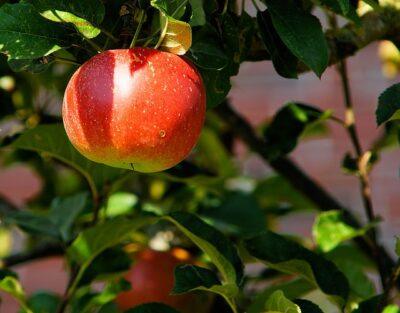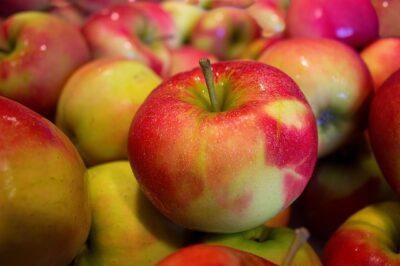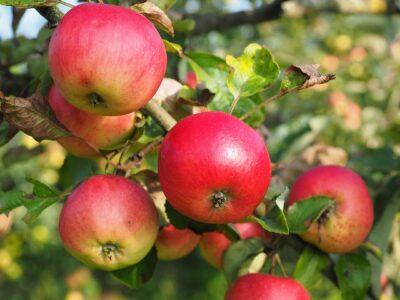|
Listen To The Article
|
Lots of homesteaders grow their own apples, but many people choose not to do so because they don’t understand which varieties of apples will grow best on their property.
There are several things to learn before you choose which variety to grow. You will need to consider your Zone, which will tell you what plants will grow best in your immediate area. You also need to consider whether or not he variety you pick is self-pollinating – and whether there is space available.
So let’s look at hardiness zones first.
Generally, if you choose a tree that is termed “hardy,” then it will grow best in Zones 3 through 5. However, if your chosen tree is termed “long-season,” then it will grow best in Zones 5 through 8.
Once you know what Zone you are in, you are ready to choose your variety. Following are nine of the most popular apple varieties in the US:
1. Red Delicious
- Originally called the Hawkeye, this is the most popular of all the US apple varieties.
- Having been bred for long shelf-life and being “pretty,” the flavor has pretty much been cultivated out of this variety.
- The skin is thick, the flesh has a single note of sweetness that is not at all “apple-y” and the texture is quite crumbly.
- These apples grow in just about every Zone in the US except for the tundral and the more equatorial regions.
- Despite their popularity these apples are used more for animal feed than for baking or canning.
2. McIntosh
- Similar to what you expect when biting into a Red Delicious.
- The skin is soft as is the flesh, and the flavor strikes a level balance between sweet and acidic.
- This variety grows well in Zones 3, 4 and the upper regions of 5.
- They are best eaten raw, in fruit salad, or made into apple sauce, apple butter, or for juicing and making cider.
The Best Source For Non-GMO Heirloom Seeds Is Right Here …
3. Golden (Yellow) Delicious
- No relation to the Red Delicious.
- Usually the least expensive apple sold at grocery stores and is considered an all-purpose apple.
- The flesh is juicy, the skin is thin but the flavor is similar to the Red Delicious in that there isn’t a lot of apple flavor there.
- This variety grows well in most regions of the country.
- These apples are good eaten raw, chopped into salads or baked into desserts.
4. Gala
- This is a New Zealand breed that has grown in popularity in the US over the last 15 years.
- It is a cross between a Kidd’s Orange Red and a Golden Delicious.
- The skin is thin with a pinkish-orange striping over a gold base.
- The flesh is crisp, fragrant and fairly sweet.
- It grows well in Zones 4 through 8.
- It is best enjoyed raw, in salads or for making juice and cider.
5. Granny Smith
- Neon green and fairly small considering its girth. Probably the most easily recognized of all the apple varieties.
- Originally cultivated in Australia, it grows well in Zones 7 through 9 in the US.
- If you like tart, then this is the apple for you. The juicy flesh is crisp and it will sweeten when it is stored for a while.
- These apples are best raw, in pies or in salads where the tartness can be offset by other ingredients.
- Granny Smith apples work very well with nut butters. This is the go-to apple if you want apples with peanut butter.
6. Fuji
- This apple was created in Japan and is a cross between two American varieties: Red Delicious and Ralls Genet.
- It is dense and crisp. It is considered the sweetest of all apple varieties.
- This apple grows best in Zones 5 through 7.
- Best enjoyed raw, chopped in salads or baked into pies.
7. Braeburn
- Braeburns were discovered rather than bred in New Zealand. It is thought that it is a cross between the Lady Hamilton and the Granny Smith.
- These apples boast the textbook apple flavor and balance the sweet and tart expected from a good apple. Many consumers say there are faint notes of nutmeg and cinnamon in the flavor profile as well.
- It grows best in Zones 6 through 9.
- These are excellent raw but they are highly regarded as one of the absolute best baking apples since they release very little juice during baking.
8. Honey Crisp
- This apple was developed for a line of cold-weather apples. It is the official state fruit of Minnesota.
- The overall flavor profile is more sweet than tart. It is also juicy and moderately crunchy.
- These apples grow best in the region they were bred for: Zones 3 and 4.
- Known to be hardy and versatile, these apples are good for just about anything.
9. Empire
- This cross between Red Delicious and McIntosh was introduced in New York in the 1960s.
- It blends the sweetness of the Red Delicious with the tartness of the McIntosh.
- Considered a crisp, juicy everyman’s apple.
- Grows best in Zones 3 through 5.
- Best enjoyed raw, chopped into salads and cooks better than most, so they will make really good apple sauce, butter and chutney.
Did you pick your variety? The next step is to do some extra research on your particular choice to determine the blooming overlap time and whether or not your variety is capable of self-pollination. This website has a great deal of good information on those two topics, as well as many others you might find of interest when building your own orchard.
If you are considering putting in an orchard, you will want to plant the trees about 15 feet apart to allow for spreading branches as the trees mature. However, if you only want a few trees on your property, then they will still get pollinated if you keep them within 50 to 100 yards of each other. The closer they are, the easier it is for the bees to find and visit both trees during the pollination time.
Which is your favorite apple variety? Which grows best where you live? Share your advice in the section below:
Learn Dozens Of Organic Gardening Secrets And Tricks. Read More Here.
 Off The Grid News Better Ideas For Off The Grid Living
Off The Grid News Better Ideas For Off The Grid Living






